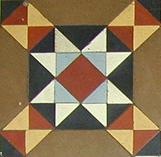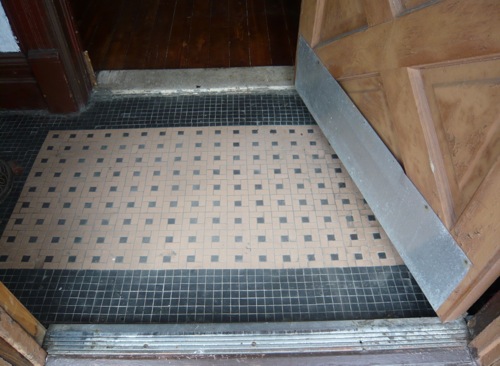Photo Pool Challenge: Victorian Encaustic Tile
We love encaustic tile and have always wondered if our house originally had it in the entry hall. None of our neighbors in the identical row seem to have any, and the first-floor entry is the original pine wood floor. Perhaps we could pry up a tiny piece of the tile floor that is there…


We love encaustic tile and have always wondered if our house originally had it in the entry hall. None of our neighbors in the identical row seem to have any, and the first-floor entry is the original pine wood floor. Perhaps we could pry up a tiny piece of the tile floor that is there now and take a look. But it’s at the same level as the wood floor, so if anything was there originally, it may have been removed. That’s an interesting clue, too, though: Whatever is under the current tile is lower than the wood floors in the rest of the house. Could that mean the entry was originally designed with some kind of tile, not a wood floor? Our house, early 1890s, is the right era for encaustic tile, even though it’s not a grand home (it was originally built as a two-family). A very small and basic one family around the corner from here from the same era has it, so apparently it wasn’t only for the wealthy, at least not by the early 1890s. Around 1900, the simpler and smaller geometric tiles came into fashion. That’s what’s in the entry of a bodega half a block away. Sometimes we think about jackhammering away the current tile, which appears to date from the 1930s or ’40s, and replacing it with encaustic tile. But then we think that might result in what our historic preservation friends call, sometimes jokingly, “introducing a false narrative.” What about you? Do you have Victorian or Edwardian tile in your entry? Have you redone or restored your tile, or are you thinking of it? Please post photos and stories here.

Victorian encaustic tile (what the British call geometric tile) from Old House Living

Photo of patterned encaustic tile set into plain tiles from a Brownstoner reader.

Photo of patterned and plain Victorian encaustic tile from Salvo Web (no longer available).

Bed Stuy encaustic tile entry restored by Gavin Young Maloney.







What's Your Take? Leave a Comment